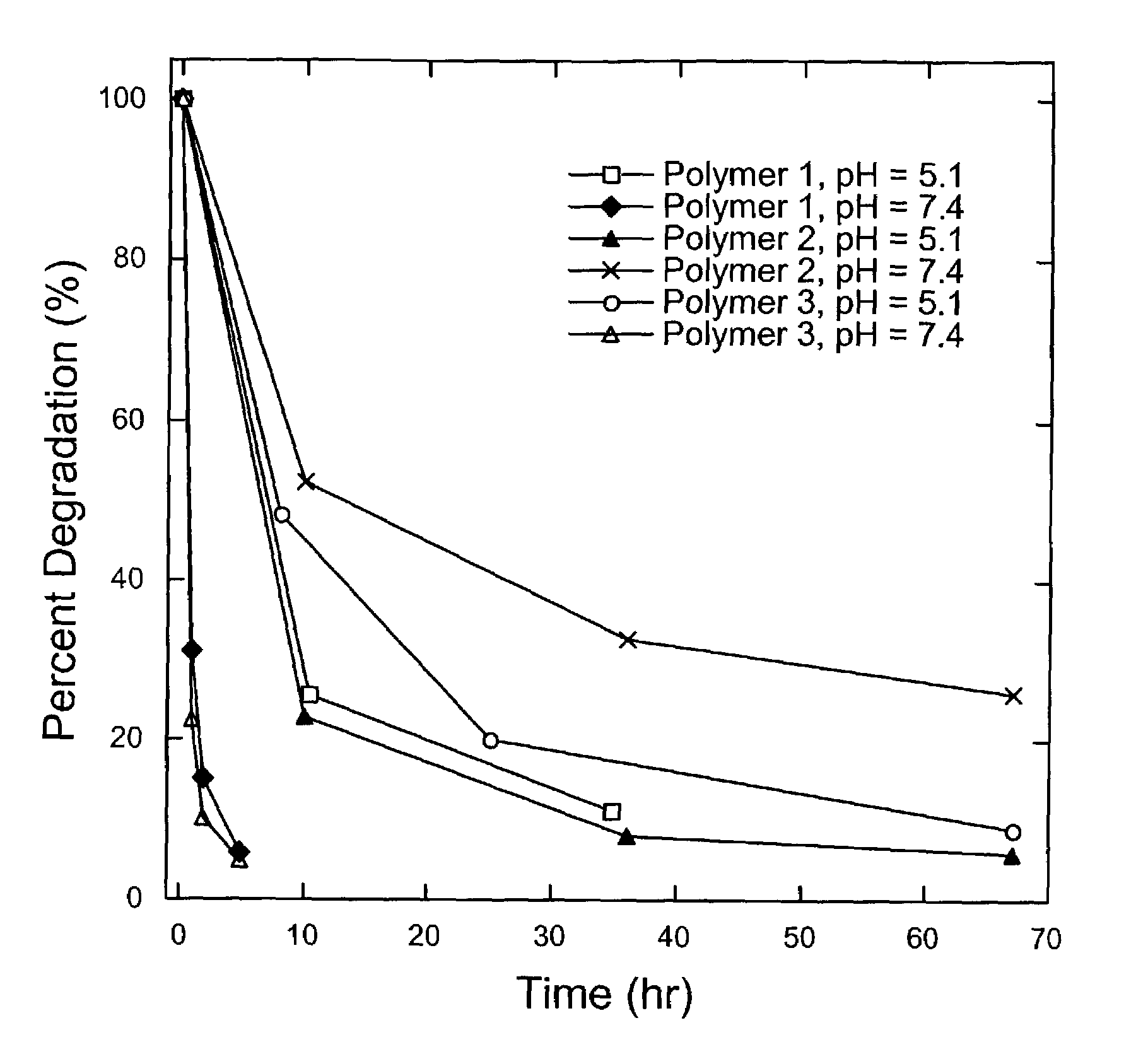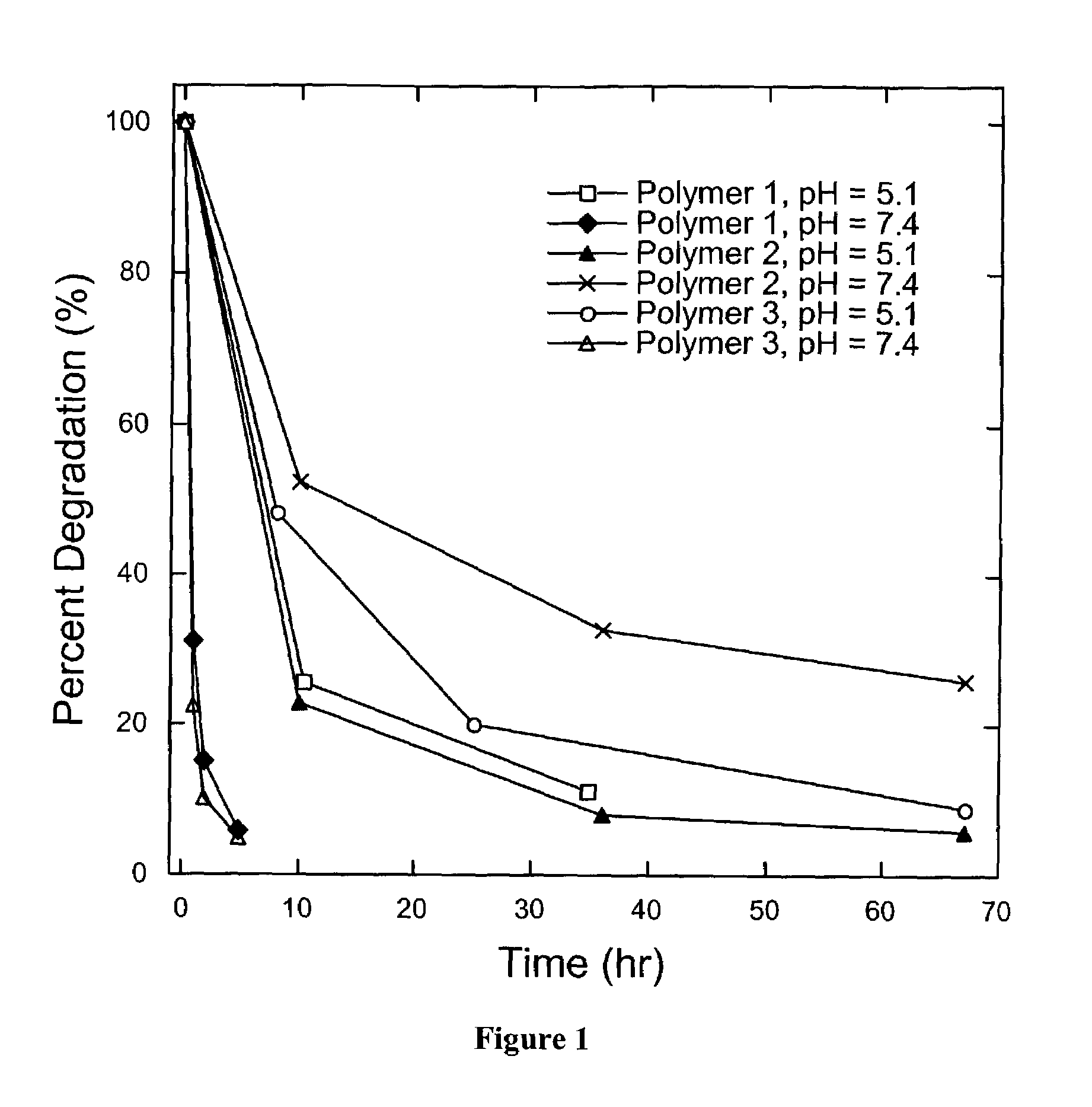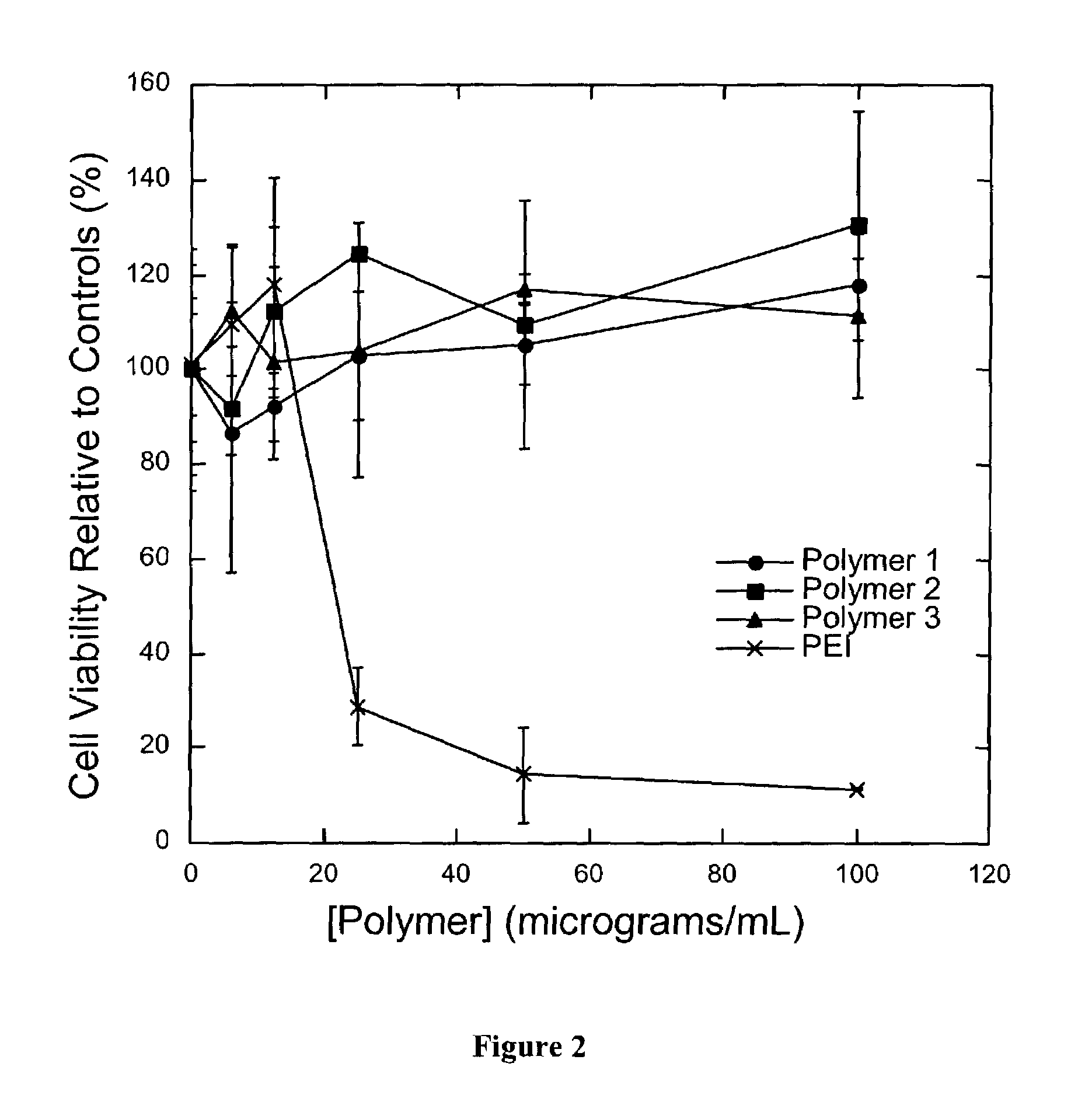Biodegradable poly(beta-amino esters) and uses thereof
- Summary
- Abstract
- Description
- Claims
- Application Information
AI Technical Summary
Benefits of technology
Problems solved by technology
Method used
Image
Examples
example 1
Degradable Poly(β-Amino Esters): Synthesis, Characterization, and Self-Assembly with Plasmid DNA
Experimental Section
[0165]General Considerations. All manipulations involving live cells or sterile materials were performed in a laminar flow using standard sterile technique. 1H NMR (300.100 MHz) and 13C NMR (75.467 MHz) spectra were recorded on a Varian Mercury spectrometer. All chemical shift values are given in ppm and are referenced with respect to residual proton or carbon signal from solvent. Organic phase gel permeation chromatography (GPC) was performed using a Hewlett Packard 1100 Series isocratic pump, a Rheodyneu Model 7125 injector with a 100-μL injection loop, and two PL-Gel mixed-D columns in series (5 μm, 300×7.5 mm, Polymer Laboratories, Amherst, Mass.). THF / 0.1 M piperidine was used as the eluent at a flow rate of 1.0 mL / min. Data was collected using an Optilab DSP interferometric refractometer (Wyatt Technology, Santa Barbara, Calif.) and processed using the TriSEC GPC...
example 2
Rapid, pH-Triggered Release from Biodegradable Poly(β-Amino Ester) Microspheres Within the Ranger of Intracellular pH
Experimental Section
[0201]Fabrication of microspheres. The optimized procedure for the fabrication of microspheres was conducted in the following general manner: An aqueous solution of rhodamine-conjugated dextran (200 μL of a 10 μg / μL solution, Mn≈70 kD) was suspended in a solution of poly-1 in CH2Cl2 (200 mg of poly-1 in 4 mL CH2Cl2, Mn≈10 kD), and the mixture was sonicated for 10 seconds to form a primary emulsion. The cloudy pink emulsion was added directly to a rapidly homogenized (5,000 rpm) solution of poly(vinyl alcohol) [50 mL, 1% PVA (w / w)] to form the secondary emulsion. The secondary emulsion was homogenized for 30 seconds before adding it to a second aqueous PVA solution [100 mL, 0.5% PVA (w / w)]. Direct analysis of the microsphere suspension using a Coulter microparticle analyzer revealed a mean particle size of approximately 5 micrometers. The secondary ...
example 3
Accelerated Discovery of Synthetic Transfection Vectors: Parallel Synthesis and Screening of a Degradable Polymer Library
Introduction
[0213]The safe and efficient delivery of therapeutic DNA to cells represents a fundamental obstacle to the clinical success of gene therapy (Luo et al. Nat. Biotechnol. 18:33-37, 2000; Anderson Nature 392 Suppl.:25-30, 1996; each of which is incorporated herein by reference). The challenges facing synthetic delivery vectors are particularly clear, as both cationic polymers and liposomes are less effective at mediating gene transfer than viral vectors. The incorporation of new design criteria has led to recent advances toward functional delivery systems (Lim et al. J. Am. Chem. Soc. 123:2460-2461, 2001; Lim et al. J. Am. Chem. Soc. 122:6524-6525, 2000; Hwang et al. Bioconjugate Chem. 12:280-290, 2001; Putnam et al. Proc. Natl. Acad. Sci. USA 98:1200-1205, 2001; Benns et al. Bioconjugate Chem. 11:637-645, 2000; Midoux et al. Bioconjugate Chem. 10:406-411...
PUM
| Property | Measurement | Unit |
|---|---|---|
| Diameter | aaaaa | aaaaa |
| Diameter | aaaaa | aaaaa |
| Diameter | aaaaa | aaaaa |
Abstract
Description
Claims
Application Information
 Login to View More
Login to View More - R&D
- Intellectual Property
- Life Sciences
- Materials
- Tech Scout
- Unparalleled Data Quality
- Higher Quality Content
- 60% Fewer Hallucinations
Browse by: Latest US Patents, China's latest patents, Technical Efficacy Thesaurus, Application Domain, Technology Topic, Popular Technical Reports.
© 2025 PatSnap. All rights reserved.Legal|Privacy policy|Modern Slavery Act Transparency Statement|Sitemap|About US| Contact US: help@patsnap.com



